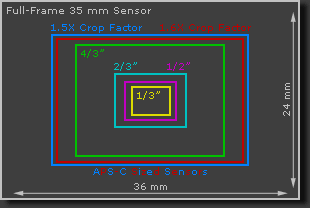Thanks Bullshark, that makes a lot of sense. I have been watching videos from the lx5 today and they look really good but at the same time the m4/3's cameras are making the decision even more confusing because they have the ability to change lenses. In your opinion do you think the wet lens options for the LX5 would be sufficient for wide angle and macro as opposed to the interchangeability of the m4/3's cameras? I am eager to get a camera soon because I have recently gotten certified and have been seeing some great wild life and can't capture the memories. Thanks for all the help, Oh bullshark one last thing- if I get a m4/3' I am leaning toward the Panasonic GF2 what are your thoughts on that camera?
I don't want to be
too condescending, but I think new divers should concentrate on learning to dive, and I think cameras are a much bigger distraction than most people realize. I like the LX-5 a lot. For you (or even for me) the camera alone will be sufficient with no strobes, and no wet lenses. I logged better than 500 dives before I started carrying a camera and had better than a thousand before I started carrying one with strobes and to tell you the truth, now I wish I didn't. It changes the way I (we) dive. There is a *reason* that I often don't have a camera with me when I find the coolest thing I've ever seen: I wasn't too busy screwing around with a hunk of electrons to pay attention to the dive.
The really cool thing about a great camera like that, is that because of the short lens barrel, the cameras built in flash combined with a diffuser is perfectly adequate for macro and close frame shooting. The really brilliant part is that when you are not shooting, you clip it off and forget about it. You can enjoy the dive. You can get the wet lens for WA sometime down the road, but keep in mind that it will demand a pair of strobes. It can come later because all the stuff you have to learn about U/W photography can be learned with just the handheld P&S. When you learn how to produce a fine picture with a compact camera, you'll make scary good pics with bigger equipment, should you decide to go that way later on.
On review though I see that the LX5 is HD, but not 1080. It is 720p just like Apple tv (c:. That's really pretty good though. It is especially fine in low light (ring any bells) and the F 2.0 leica lens can't be beat. The lens is also 24mm (equivalent) zoomed in which compares to a 12mm on M43 while it 3.5x zooms out to 84mm (108) it optically equivalent to a 42mm(54) M43. You don't change lenses you just push a button. With the wet lens WA , your ears will be in the picture by acccident.
There is another cost to the interchangeable lense versus something like the LX5: When you're set for macro you're set for macro. When youre set for WA, You're set for WA. The LX5 goes to Macro just by pushing a button. The P&S is much more flexible.
I have to update my prior post to say that it looks like Nauticam (at least) is pretty commited to the Nex line. They now have a housing for the Nex 7, and it appears that the ports they made for the Nex 5, will work on the 7. The lenses are still pretty mediocre compared to whats available on M43, but the Nex 7 shows that the platform is expanding; with Nauticam at least. I just have to say on a value basis that 3000.00 in a housing is a lot of money for a $700 camera with limited lenses.
All that said, I currently like the Pen E-P3, but not enough to buy it. I continue to be disappointed by, and suspicious of these cameras and their inability to produce film speeds and slower than ISO 200. They apparently have a noise problem with their software that they can't overcome or else they won't uncork it with the plan to use it as a buy-up feature in the P4 or 5 or whatever. My lowly G11 does ISO 80, and even ISO 50 with CHDK firmware installed. Why aren't these cameras offering lower filmspeeds? I don't think they can get the noise down. The P3 display has 50% more pixels the the PL3, but unfortunately Oly is not making a housing for it...10Bar is though.
Is everyone else waiting for Canon or Nikon or Samsung or Fuji to Throw their hat in the M43 ring?
BTW: don't believe DPReview stats for the Olys. It says that they all do ISO100 in manual modes. Unfortunately Olympus does not agree. :-(
Of the Pannys, I get dizzy looking at the models and don't know why they have so many G/GF/GH/GX, differing sensor quality seems to be the case, with the GX1 being way ahead there. They too only go down to ISO160 except the GF2 (according to DPReview) goes to ISO100. You'll learn sooner or later that U/W Photography is a noise nightmare and lower ISO is always to be preferred for any shot you can get it on.
I have been researching these choices for over a year. I was all set to buy up from my current set up, but just writing these replies I see it would be a mistake. I may well choose to upgrade my compact rig to an LX 5 myself.
BTW: The Leica "D-LUX 5" and the Panasonic "LX5" are exactly the same camera. You will find a 300.00 price difference because the Leica
includes Adobe Lightroom. You'll want that for sure, too.





